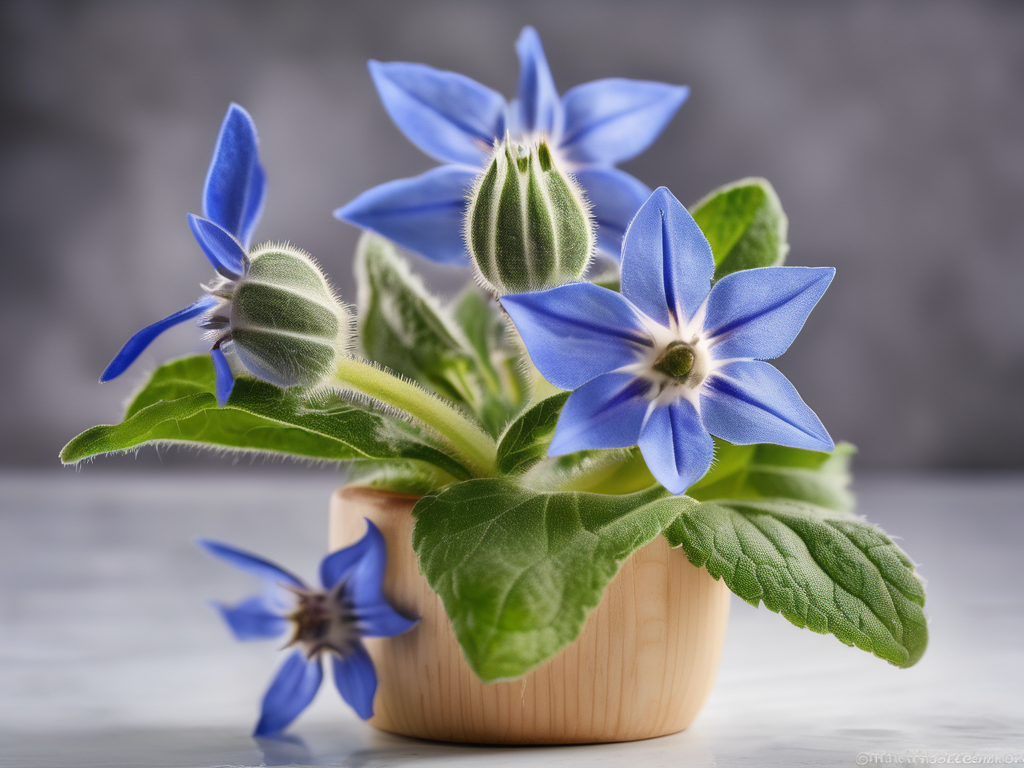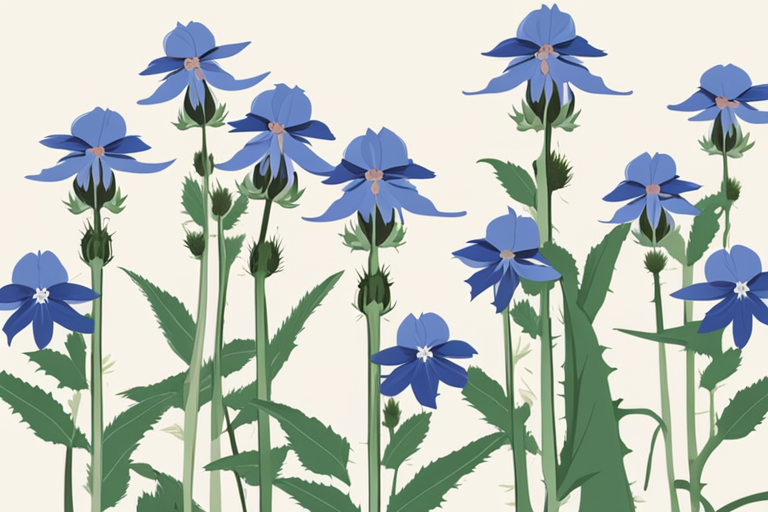
Is Your Borage Still Good? How to Tell if Your Borage Has Gone Bad
Get Your Free Food Safety Cheat Sheet
30 most common foods with instant answers. Print it and stick it on your fridge—completely free!
Is Your Borage Still Good? How to Tell if Your Borage Has Gone Bad
Borage is a versatile herb known for its vibrant blue flowers and cucumber-like flavor. Whether you grow your own borage or purchase it from the store, it's essential to know how to determine if your borage has gone bad. In this guide, we will discuss the signs to look for to ensure your borage is fresh and safe to consume. (Borage)
Understanding Borage Shelf Life
Before we dive into how to spot spoiled borage, let's first understand the typical shelf life of this herb. When stored properly, fresh borage can last for about 3-5 days in the refrigerator. Dried borage, on the other hand, can retain its flavor and aroma for up to a year when stored in a cool, dark place.
Proper Storage of Borage
To extend the shelf life of your borage, follow these storage tips:
-
Fresh Borage:
- Place fresh borage in a perforated plastic bag in the refrigerator's crisper drawer.
- Avoid washing borage before storage, as excess moisture can lead to spoilage.
- Use borage within a few days for the best flavor and quality.
-
Dried Borage:
- Store dried borage in an airtight container away from heat and light.
- Label the container with the date of purchase to track its freshness.
- Check for any signs of spoilage before using dried borage in recipes.
Signs Your Borage Has Gone Bad
Now, let's explore the indicators that your borage may have spoiled:
Visual Clues
- Discoloration: Look for any dark spots, mold, or slimy patches on the borage leaves or flowers.
- Wilting: Fresh borage should be firm and vibrant. If the leaves appear wilted or droopy, it may be a sign of spoilage.
- Presence of Mold: Mold growth on borage is a clear indication that it is no longer safe to consume.
Aromatic Changes
- Off Odor: Spoiled borage may emit a foul or musty smell. Fresh borage should have a pleasant, cucumber-like aroma.
Texture and Taste
- Sliminess: If the borage feels slimy to the touch, it has likely started to spoil.
- Bitter Taste: Taste a small piece of borage to check for any bitter or off flavors, which can indicate spoilage.
Safety Precautions
When in doubt about the freshness of your borage, it's best to err on the side of caution. Consuming spoiled borage can lead to foodborne illnesses and digestive issues. Here are some safety precautions to keep in mind:
- Do not consume borage that shows visible signs of spoilage.
- Wash your hands thoroughly after handling spoiled borage.
- Clean and sanitize any surfaces or utensils that came into contact with spoiled borage.
Conclusion
In conclusion, keeping your borage fresh and safe for consumption is crucial for enjoying its unique flavor and benefits. By understanding the signs of spoilage and following proper storage practices, you can ensure that your borage remains fresh and flavorful. Remember to trust your senses and use the tips provided in this guide to determine if your borage has gone bad. Stay vigilant, and enjoy your borage in its best condition! (Borage)

Authoritative Food Safety References
These agencies and university labs inform every tip and health precaution we publish.
USDA FoodKeeper – Cold Storage Guidelines
Official refrigerator, freezer, and pantry timelines maintained by the U.S. Department of Agriculture.
Visit USDA FoodKeeperFDA Produce Safety Rule & Grower Guidance
Field-to-fridge handling practices that prevent contamination of fruits, vegetables, and leafy greens.
Visit FDA Produce SafetyCDC Foodborne Illness Prevention Hub
Surveillance-backed guidance on pathogens, symptoms, and steps to reduce foodborne illness risk.
Visit CDC Food SafetyUC Davis Postharvest Technology Center
University research detailing optimal storage atmospheres for produce after harvest.
Visit UC Davis PostharvestPenn State Extension – Home Food Preservation & Safety
Peer-reviewed extension bulletins on safe canning, chilling, and reheating practices.
Visit Penn State ExtensionHow can I tell if my borage has gone bad?
Can I still use borage that is past its expiration date?
How should I store borage to prolong its freshness?
Can I freeze borage for later use?
Are there any potential health risks associated with consuming spoiled borage?
Get Your Free Food Safety Cheat Sheet
30 most common foods with instant answers. Print it and stick it on your fridge—completely free! Want more? Upgrade to the complete guide with 70+ foods.
Scan your food directly and get instant safety info using our AI-powered camera feature.